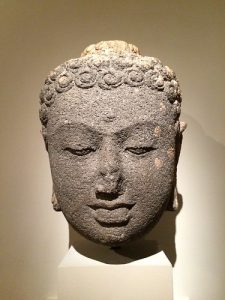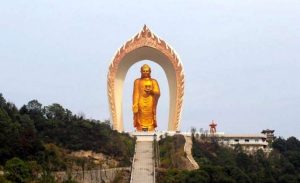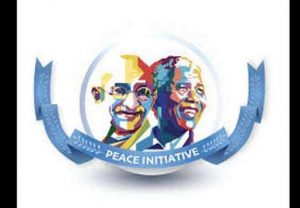
(First published on May 23)
A gentleman of culture is ideally one well travelled. But a government official who facilitates friendship between two countries has the responsibility of being a representative to two worlds. Such a privilege is no more pronounced than in Sino-Indian relations, which at its heart is not only the story of two influential nations, but two “civilization-states”. As such, a diplomat from India to China or vice versa needs to have more than factual knowledge. He or she needs to have a deep, personal mindfulness of the profoundest bond that has bound China and the Indian subcontinent together for the past two millennia: Buddhism. That is why Buddhists (and anyone who welcomes the values of peaceful coexistence among human communities and with the environment) should pay appreciative attention to future public events organized by Mr. Prashant Agrawal.
It has been only three months since Mr. Agrawal was transferred to Hong Kong after working in Southeast Asia. Currently the Consul General of India to Hong Kong and Macau, he has many levels of Sino-Indian ties to attend to, including economic, political, and cultural. But since one of his first achievements in Hong Kong was to host the “In the Footsteps of the Buddha” exhibit in Wan Chai, it has become apparent that here we have a diplomat who is intensely aware of the religious heritage shared by India and China.
“Buddhism has been a sacred bond tying together India and China, as well as the whole of Asia for millennia,” he told me. In his words, this bond was a “shared heritage” that he wished to disseminate at the exhibit (which was researched by Nava Nalanda Mahavihara, a Pali and Buddhist Studies institute founded in 1951). “I was very heartened we had hundreds of visitors, even though it was only for a short while.” Indeed, the exhibit was held for only four days, from May 15 – 19.

Mr. Agrawal has ambitious plans for larger, longer, and higher quality exhibitions. “We have proposed to the Home Affairs Bureau [of Hong Kong] and Mr. Tsang Tak-sing [Hong Kong’s Home Affairs Secretary] if our two governments can agree to collaborate on more events. We need a larger timeframe and a venue with more space for exhibiting the best of Buddhist art,” he said. By the best, he means the most beautiful and affective archaeology India has to offer, especially the artifacts at the Indian Museum in Calcutta and the National Museum in New Delhi – no more replicas like those at the Wan Chai exhibit. But he was also sensitive to the most basic and noblest instincts of some visitors. “People want to touch Lord Buddha’s image, and they can do that with fine replicas of Buddhist sculpture. The authentic items from the museums are of incredible historical value, but we can only admire them at a distance.”
One of his most engaged projects is the establishment of a new university near Nalanda. The ruins of Buddhism’s most famous cloisters are a painful reminder for all Buddhists of one of India’s saddest losses. Not any longer, if the plans of the East Asia Summit go according to schedule.
When Thailand hosted the 4th East Asia Summit (EAS) in Hua Hin in October 2009, ASEAN countries voted to support the establishment of Nalanda University as a “non-state, non-profit, secular and self-governing international institution”.The Indian Government designated 500 acres near Nalanda’s ruins for the new university’s construction. This year an international design competition concluded, clearing the way for the building of the campus.
“We will have a good campus, and we have many partners who are helping with this ambitious initiative out of goodwill and dedication,” Mr. Agrawal told me. “Some classes will already start this year, and it’s hoped that the new Nalanda university can be a high-standard center for higher education: not just in Buddhist Studies, but in secular pursuits like environmental management.” This new university, along with Mr. Agrawal’s collaboration with Nava Nalanda Mahavihara, could well signal a renewal of high quality education locally and internationally.

Given his unique drive in promoting Buddhism, I asked him if he has any friends or colleagues who shared his interest in the tradition. “Quite a few, I believe,” he replied. “In India, we have religions of all kinds and forms, and we have equal respect for them all. But we owe much to Chinese Buddhist monks like Faxian (337 – c. 422 CE) or Xuanzang (c. 602 – 664 CE), who recorded much of India’s Buddhist landmarks and histories while most Indian texts were lost. Part of our recovered Buddhist history is thanks to the records of these travellers.”
The great Indian monks who transmitted Buddhism to China throughout the Han to Tang Dynasties were, effectively, the first Sino-Indian diplomats. The same could be said for the Chinese pilgrims who travelled to India over the centuries. Clerics like Kumarajiva and Amoghavajra held privileged, influential posts at the Chinese imperial court, and Xuanzang famously recorded his meetings with several rajas of the Sanskrit-influenced cultural sphere (South and Central Asia). In this sense, Sino-Indian relations have possessed a spiritual depth from the very beginning. Mr. Agrawal’s political responsibilities reflect this heritage, and now he has the opportunity to take up the mantle of India and China’s monastic emissaries. So far, he is off to an admirable start.












